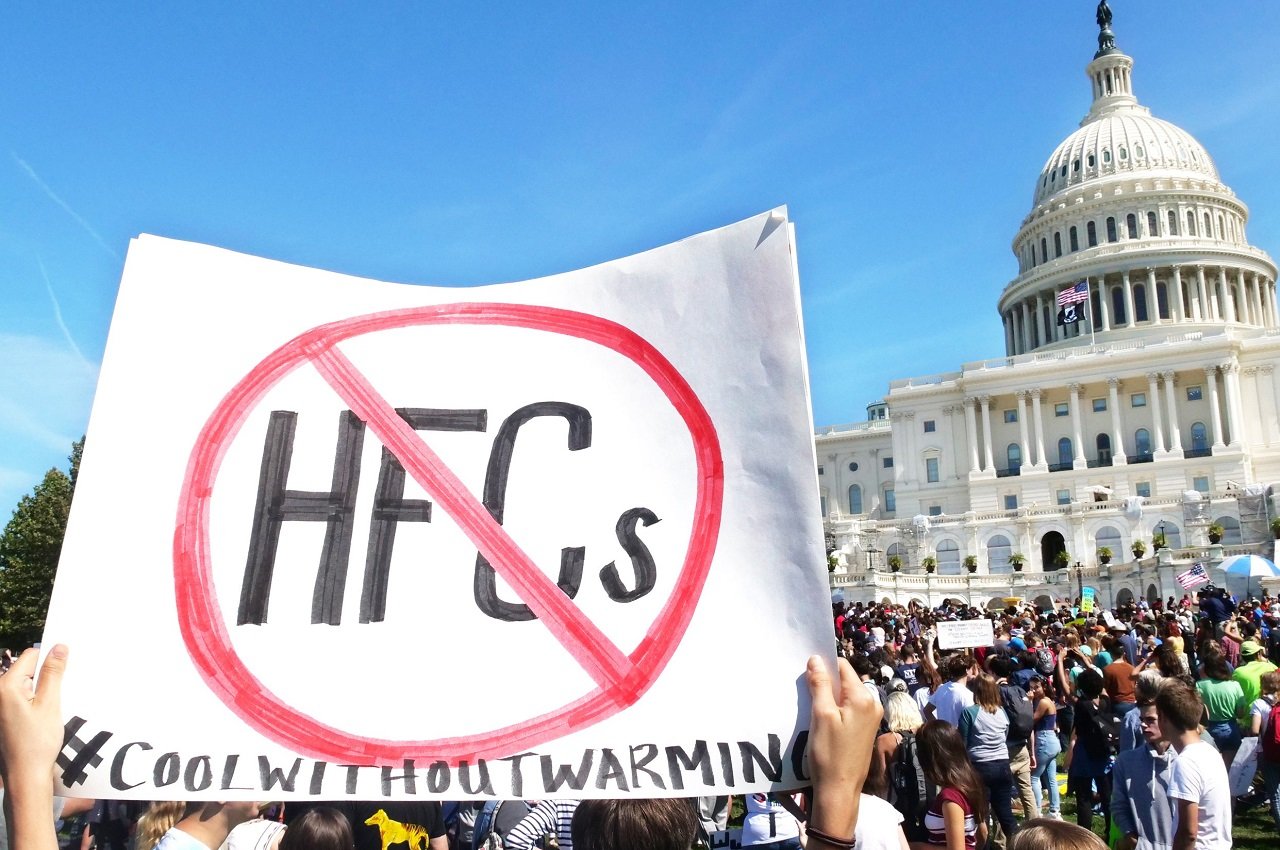The investigation targeted leading grocery chains, including Safeway (owned by Albertsons), Save Mart, Smart & Final, Walmart, and Kroger-owned Ralphs. Safeway, which operates the largest number of stores in the state, was a key focus due to its previous noncompliance with California’s Refrigerant Management Program (RMP).
Key Findings
- Refrigerant leaks were detected in 50% of the 28 stores surveyed.
- 75% of Save Mart stores visited showed refrigerant leaks, the highest rate among chains surveyed.
- Safeway, Smart & Final, and Walmart each recorded leaks in half of their stores visited.
- 12 stores reporting leaks in 2024 had previously documented leaks in 2023, indicating recurring issues.
- Refrigerant concentrations detected reached levels up to 60 ppm (parts per million) on sales floors.
These findings align with earlier investigations conducted in Washington, D.C., and New York City, where similarly high leak rates were observed, pointing to the widespread nature of the issue.
The Impact of Refrigerant Leaks
Hydrofluorocarbons (HFCs), the most common refrigerants used today, are potent climate pollutants with global warming potentials thousands of times higher than carbon dioxide (CO₂). The U.S. Environmental Protection Agency (EPA) estimates that 25% of refrigerants leak annually from a typical supermarket. Across 42,000 U.S. supermarkets, this equates to greenhouse gas emissions comparable to burning 65 billion pounds of coal annually.
Regulatory Compliance and Settlements
The California Air Resources Board (CARB) enforces the Refrigerant Management Program, which mandates routine leak inspections, prompt repairs, and annual reporting. Noncompliance with RMP regulations has resulted in significant penalties for supermarket chains:
- Albertsons settled with CARB in 2021 for $5.1 million for failing to repair leaks and maintain records. A subsequent penalty of $4,000 was issued in 2023 for additional violations.
- Save Mart Companies has faced three CARB settlements since 2015, including a $1.6 million fine in May 2024.
These penalties highlight ongoing challenges with leak management and reporting across the industry.
The Path Forward: Alternatives and Solutions
Transitioning to climate-friendly refrigerants with ultra-low GWPs, such as CO₂, propane, and ammonia, offers a viable solution. While such systems are widely adopted in Europe, with over 68,500 stores using transcritical CO₂ technology, the U.S. lags behind with only 1,500 stores utilizing similar systems.
Proactive refrigerant management, including routine inspections and installing leak detection systems, can significantly reduce emissions. The EPA’s GreenChill program, a voluntary initiative for reducing refrigerant leaks, has reported success, with certified stores achieving annual leak rates as low as 5%. However, none of the investigated companies, except Ralphs (a GreenChill partner but uncertified), are part of the program.
Industry Urged to Act
The investigation calls on supermarkets to address refrigerant leaks promptly, comply with existing regulations, and accelerate the transition to ultra-low GWP refrigerants. As climate-friendly alternatives are already proven and widely available, improving refrigerant practices in the food retail sector represents a critical opportunity for reducing greenhouse gas emissions.
With the EPA’s recent Emissions Reduction and Reclamation (ER&R) program aiming for 120 million metric tons of avoided emissions by 2050, strong enforcement and industry participation remain essential to meet climate goals.
